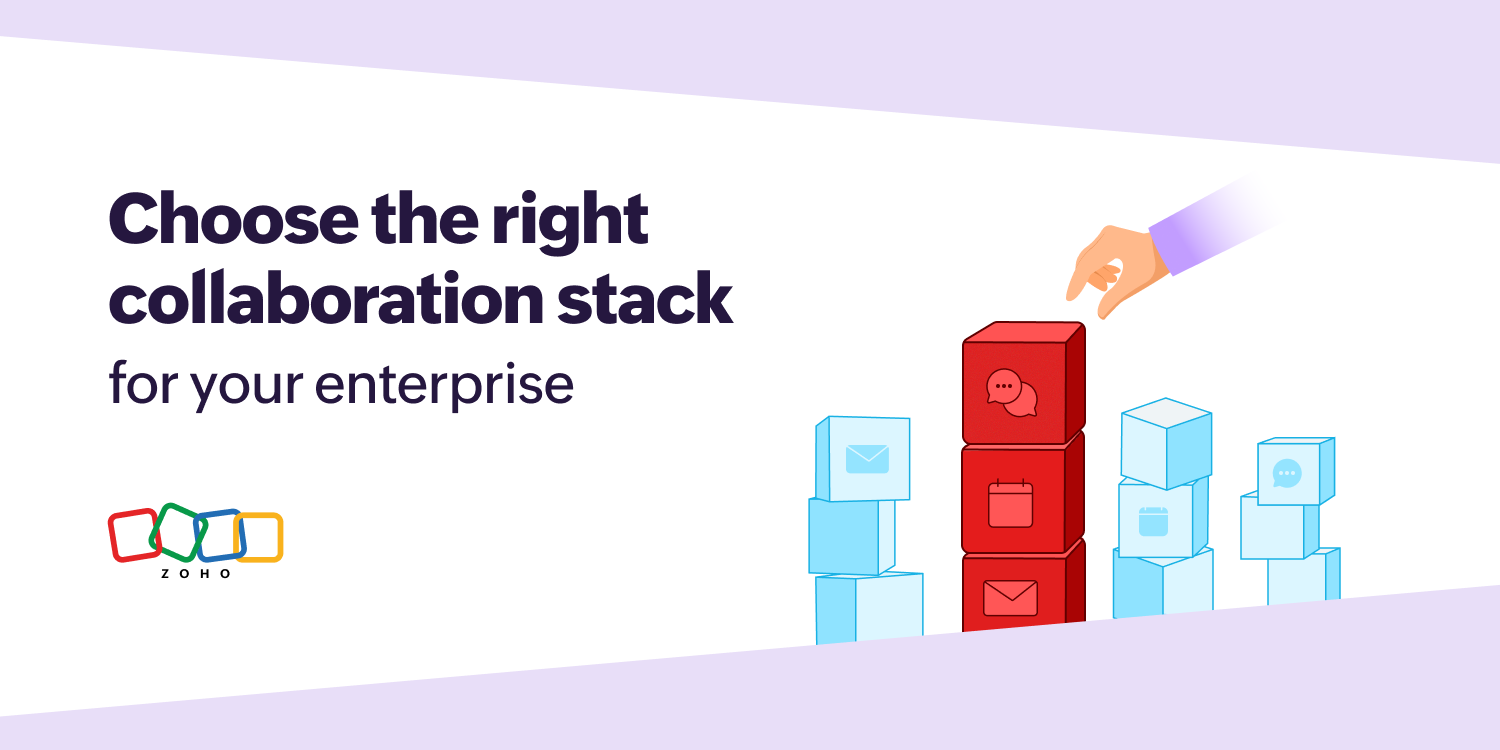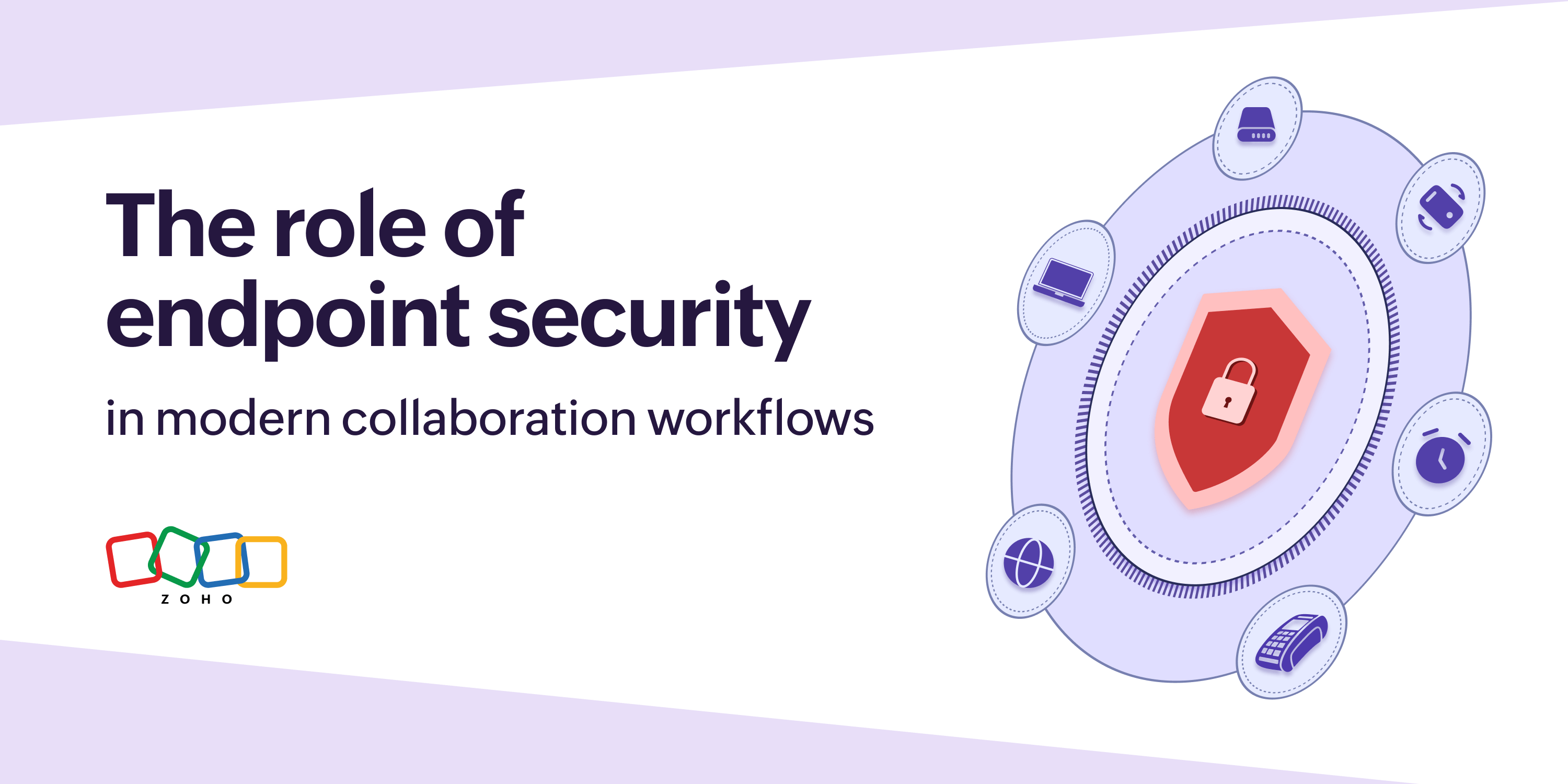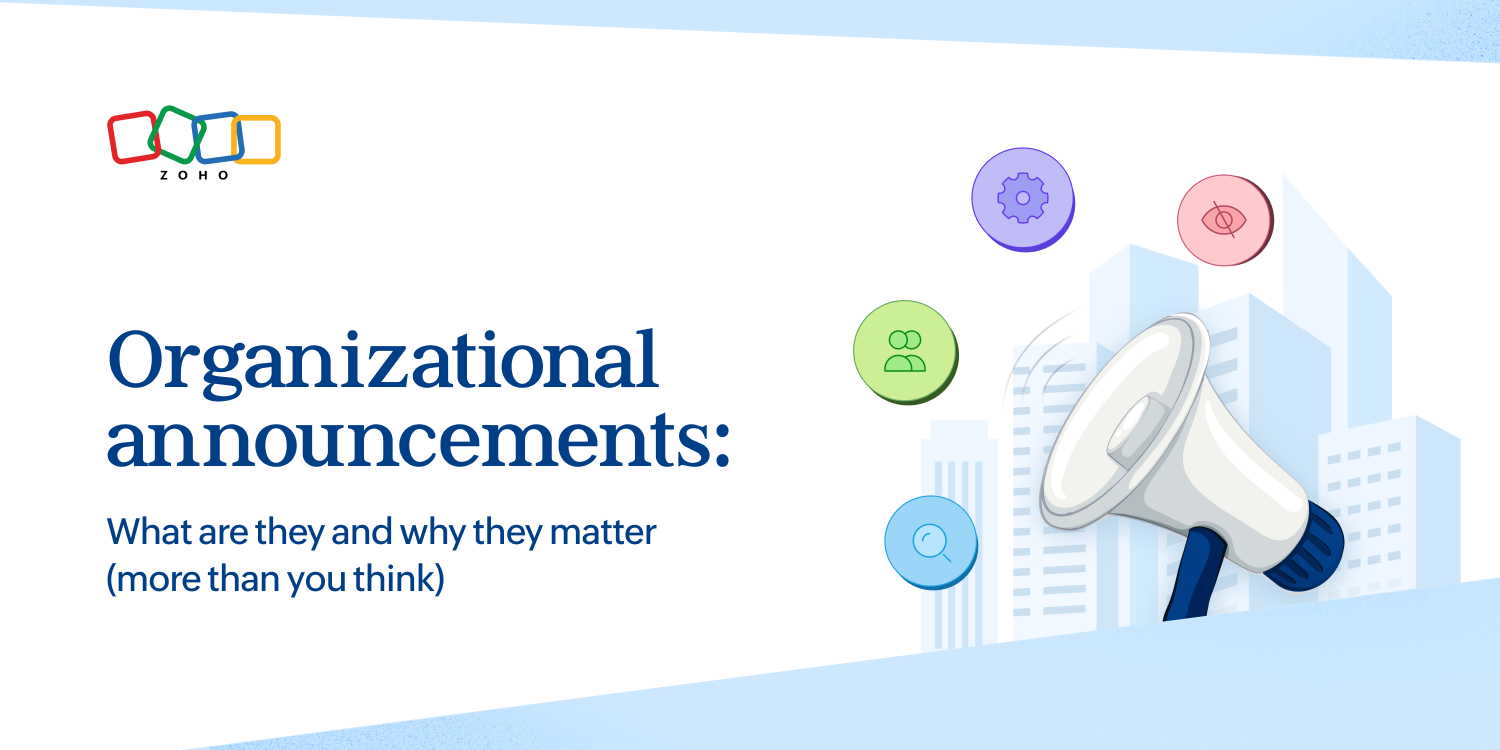- HOME
- All Products
- Collaboration
- How to choose the right collaboration technology stack for your enterprise
How to choose the right collaboration technology stack for your enterprise
- Published : October 28, 2025
- Last Updated : October 28, 2025
- 517 Views
- 4 Min Read
Collaboration in the workplace isn’t just talking with your colleagues. It's meaningful communication that helps people achieve goals efficiently. Email and chat tools alone aren’t enough for enterprises to solve this. A complete collaboration technology stack is your solution. This goes beyond simple instant messages and emails to cover all aspects of information flow.
Getting the collaboration technology stack right can provide a reliable avenue for information to flow without any hindrance for your enterprise. This is ideal for enterprises who prioritize teams that stay connected and create the most value.

What is a collaboration technology stack?
A collaboration technology stack is a complete set of software an enterprise uses for better communication, teamwork, and productivity. This digital backbone helps hybrid and remote teams connect, share, and manage projects easily.
What does a collaboration technology stack include?
An enterprise collaboration technology stack comprises multiple layers designed to support diverse collaboration needs.
1. Email and chat
Email is the primary means of enterprise communication, and an instant chat application is helpful for instances requiring quick conversations. This is the important layer of an enterprise collaboration technology stack because it handles the bulk of your collaborative needs.
2. File sharing and document collaboration
Modern collaboration extends beyond just words. It includes files of all kinds, and the ability to access and work together on them well is crucial. Getting this part of your collaboration stack right can save you from file duplication and outdated spreadsheets.
3. Video conferencing
Due to the boom of hybrid work, not everyone is physically together at any given time. Video conferencing comes in handy here. This helps you to engage in impactful face-to-face conversations, no matter where everyone is.
4. Shared calendars
An enterprise with multiple people is bound to have availability conflicts with everyone running in their own lane. A shared calendar brings everyone together. It lets them stay updated on each other's priorities for the day and make plans accordingly.
5. Project management tools
Projects are the lifeline for any enterprise. They directly impact the bottom line and make businesses profitable. Having robust project management tools that are collaborative in nature is unequivocally important for your enterprise.
6. Shared knowledge bases
This is another crucial cog of the collaborative technology stack for your enterprise. A shared knowledge base breaks silos, empowers everything with the right information, and maintains a record of important organizational details for future reference.
The advantages of getting your collaboration stack right
The collaboration technology stack may seem overwhelming with a lot of layers. But the ROI on this for your enterprise is compounding, making it worth the hassle. Here are some of the ways your enterprise gains an upper hand with the right stack.
1. Enhanced productivity
You can experience a surge in general productivity within the employees right off the bat. Tailored collaboration methods relevant to the task prevents information bottlenecks and boosts overall productivity.
2. Clear and efficient communication
A dedicated collaboration avenue for different mediums—chats, files, meetings, calendars—assures there’s no confusion during communicating. This ensures easy access to relevant information for reference, because everything has its own exclusive space.
3. Stronger team bonding
Confusing communication channels can fragment team members. Having the right collaboration tools makes teamwork transparent, engaging, and fun. Remote teams can feel connected with tools that break down communication barriers.
4. Maintains quality output
A disjointed collaboration setup can derail progress and hurt quality. The right collaboration technology stack connects teams and empowers individuals to share feedback promptly, resulting in fewer errors in the end.
| Aspect | Robust collaboration stack | Lax collaboration stack |
| Communication | Clear and happens in real time | Fragmented and siloed |
| Productivity | Quick decision-making | Time wasted searching for files |
| Knowledge sharing | Strong knowledge management | Buried information |
| Customer experience | Timely replies and higher satisfaction | Inconsistent service quality |
How to get it right for your enterprise
We’ve seen how a robust collaboration technology stack can be a game changer for your enterprise. It's vital in your endeavors to transform employee productivity and effectiveness. Now let's move on to the important part—getting it right for your enterprise.
1. Determine your enterprise collaboration needs
No two businesses have the same needs. It's a constant variable. Therefore, nailing your priorities and your goals will help determine the collaboration stack you need. You need to ask yourself:
- What business impact should this drive?
- What inefficiencies should this fix?
- What should be the SSoT for my entire enterprise?
2. Choose an anchor suite to avoid fragmentation
An anchor suite is the central software that handles the bulk of your collaborative needs. You can add additional collaborative tech on top of this based on your enterprise needs. Choosing a single suite will minimize tool sprawl and makes integrations and governance easier for you.
3. Never compromise on security and compliance
You cannot skimp on the security and compliance of a collaborative technology stack. It may save you money in the short term but the long-term repercussions will be significant for your enterprise.
Based on the industry you're in, make a checklist of legal, compliance, and security parameters you need to adhere to before picking the tools for your stack.
4. Plan for scalability and interoperability
When building your collaborative stack, prioritize long-term growth. Choose tools that easily scale with new users, storage, and features, and ensure that they integrate smoothly with your existing systems. This prevents fragmented information and siloed communication as your enterprise expands.
5. Plot success metrics and pilot the stack
Test your collaborative technology stack with one department before an enterprise-wide rollout. This approach lets you evaluate its benefits and address any issues early, minimizing risk to the broader organization. This also allows you to analyze its impact against the success metrics you've defined for your enterprise.
Summing up
For your enterprise sprawling with emails, chats, files, meetings, and much more, a collaboration technology stack can be a lifeline. It streamlines how information is shared across the organization, driving greater productivity and collaboration.
Choosing the right collaboration stack can give you a competitive edge by bringing your team together. Real-time communication and ready access to updated information helps create exceptional output and boosts your enterprise value.
 Rohan
RohanRohan Samuel is a product marketer for Zoho Workplace who talks about workplace security, productivity, and collaboration. He is a highly enthusiastic writer who delights in evoking visual imagination with words. He also enjoys playing football with his buddies and traveling to new places.


